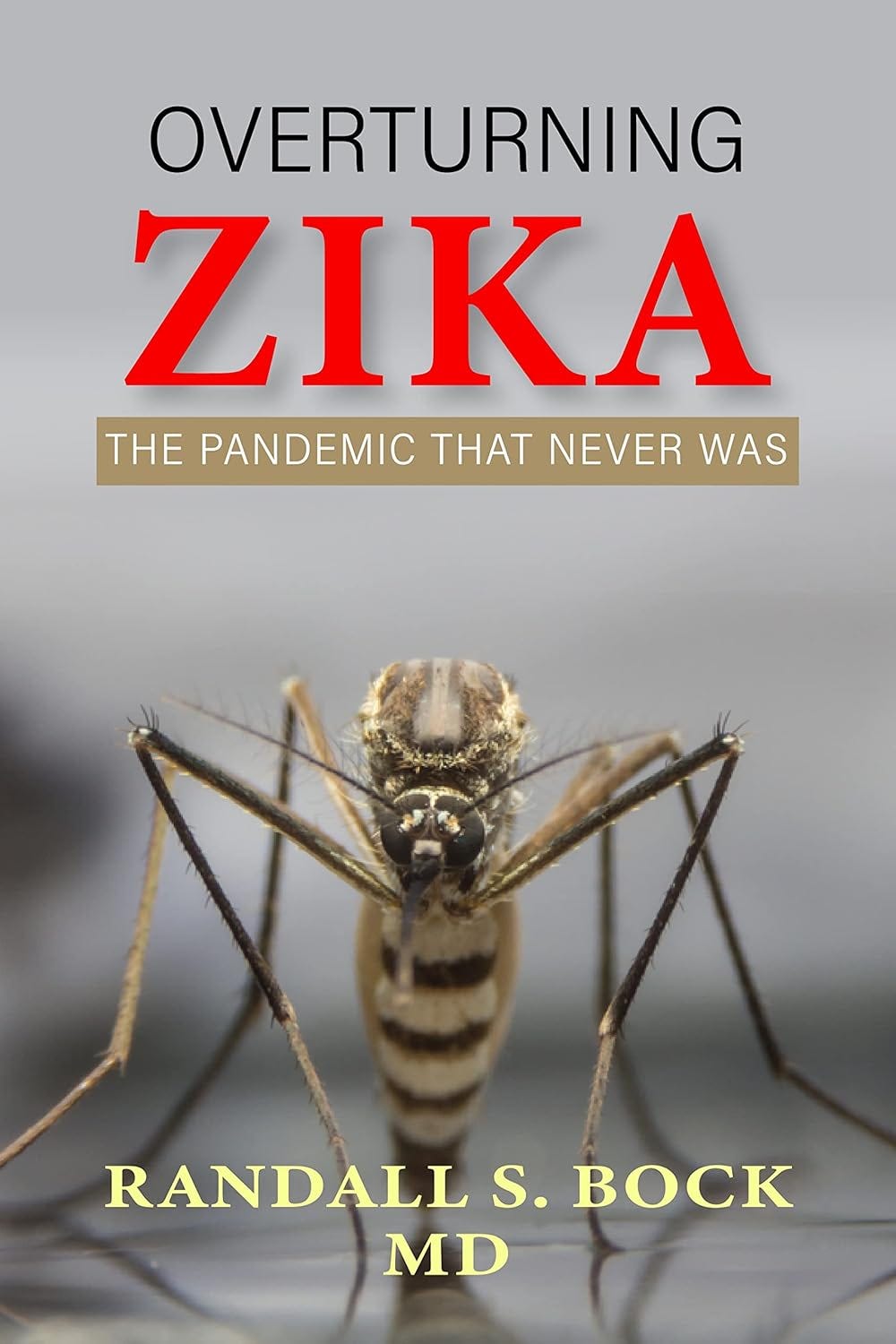IPAK-EDU Director’s Science Webinar
Monday 5/26 @ 7:00pm Eastern
with/ Dr. Randall Bock
“ZIKA : The Pandemic That Never Was”
Please join us!
The events of 2016-2017 around Zika have been labeled both a ‘pandemic’ and ‘outbreak’ by many. Significantly, the 2022 G20 High-Level Independent Panel convened to review pandemic risk lists Zika as a ‘major outbreak’. It is listed alongside Ebola, SARS-CoV-1, MERS, and Lassa virus.1
At the time, the WHO claimed Zika was a virus with “explosive pandemic potential” and predicted “3-4 million cases of Zika virus disease'“.2
But what actually happened?
Dr. Randall Bock took the deep dive and he’s going to tell the tale of what he learned.
Don’t miss this webinar!
-
Brief bio:
Dr. Randall Bock graduated from Yale University with a Bachelor of Science in chemistry and physics, then a MD from the University of Rochester. He is the author of “Overturning Zika : The Pandemic That Never Was”.
-
The Mysterious Case of Zika-Microcephaly’s Disappearance
Excerpts from a 2022 article by Randall Bock at the Brownstone Institute
In 2015, a viral pandemic from Northeast Brazil exploded into the news, supported by breathless public health alarms that Zika — a flavivirus acknowledged for decades as harmless — was now suddenly responsible for congenital microcephaly (babies with small heads; diminished intellect). WHO-aligned experts within Latin America recommended that women forgo childbirth indefinitely — possibly until a Zika vaccine’s fabrication (still unrealized). Massive panic predictably ensued.
Not a single case of human medical illness had previously been attributed to Zika — a near twin of the dengue virus (which itself brings a million South American “bone-break fever” cases, yearly) – – and never with any associated congenital microcephaly. Brazil’s medical research establishment treated the Zika- (and later microcephaly-) claims with initial skepticism — but were twice overwhelmed by vested parties’ self-serving media leaks – the latter of which spiraled into full-fledged national panic.
The upheavals from Zika-microcephaly included outsized public health overreactions: travel advisories; Brazilian soldiers on the streets; indelible fear; emergency injunctions proposed for abortion; the eternal absence of more than 100,000 “ghosted” Brazilian children (babies not conceived during the panic).
Fortunately, the Zika pandemic has fizzled out inconspicuously and unceremoniously; never fulfilling the analysts’ predictions of an additional million microcephalic births yearly, worldwide. Nonetheless, its complete disappearance hasn’t resulted in a single scientist questioning the credibility of the underlying (likely false) premise: that receiving a Zika-carrying Aedes aegypti mosquito-bite early in pregnancy may irrevocably damage the cherished life within.
Zika, discovered in Uganda in 1947, had warranted literally only a baker’s dozen of scholarly articles in 60 years, none of which verified any human danger. In 2007, there was a bit of a “buzz” as certain dengue cases in the Pacific were relabeled by the CDC (after-the-fact and without clinical correlation) as Zika.
A Missing Virus for A Missing Pandemic
Governmental response to Covid-19 provided a template of centralizing power through a public health inversion of many of its earlier precepts: e.g. emphasizing vaccines even after the relevant virus’ exit from the scene. The union of pharmaceutical companies’ financial force with public health’s sovereign power of commissioning and mandating a vaccine, while absolving its liability certainly is mutually beneficial to these stakeholders. NIAID’s forging ahead with a vaccine for Zika despite its 6-year quiescence suggests a similar temptation.
The United States Congress approved Mr. Obama’s $1 billion Zika-funding request in September 2016 (by which time, Zika-microcephaly had already shown signs of being a mirage – and Congress should have known better). About 40%, $400 million, was earmarked for production of a Zika vaccine. In the interim, a dengue vaccine has come to be, so the technology exists to produce one for Zika.
The delaying problem is nearly a Catch-22. To prove the vaccine’s efficacy, the virus has to be circulating (and dangerous in the first place, so as to warrant the effort and potential side effects). When the virus doesn’t perform its intended role of pervasiveness and danger, there’s nobody upon whom to test the vaccine and no rationale for having one to begin with.
With Zika having fizzled worldwide, and the US government’s own ethics panels having forbidden injecting and infecting people with Zika in pursuit of a vaccine, what was NIAID to do with $100 million still in hand and multiple researchers to keep employed?
In 2018, researchers attempted to circumvent the “problem” of Zika’s absence by promoting a Zika human challenge trial. This meant infecting healthy Brazilian subjects with a virus that had stopped infecting people. Johns Hopkins’ Dr. Anna Durbin revealed that Brazil’s version of the FDA had refused to [allow the United States to] conduct such experiments [on Brazilian soil]. For that reason, she set out to conduct such an experiment stateside.
Currently, paid volunteers in Baltimore are being injected with Zika – and no doubt soon enough we will have a Zika vaccine. Will this entail a Zika-vaccine mandate throughout the tropics – and, if so, cui bono? Herein lies any conspiracy theorist’s presumed impediment to a re-examination and repeal of the theory. Zika-microcephaly represents a universally accepted “emergency;” albeit one whose (hugely) major benefit to the pharmaceutical/public health -axis has not yet fully been extracted. Annulment of the theory eliminates a pharmaceutical pathway to profit and a public health pulpit.
You can read the entire piece here: https://brownstone.org/articles/the-mysterious-case-of-zika-microcephalys-disappearance/
You can find much more from Dr. Bock at randybock.com
Once a week, this webinar series brings a focus to science as it applies to public issues of concern. The webinar brings to you expertise from scientists, researchers, data analysts, medical professionals, health advocates, attorneys, and more, all with the opportunity to learn, ask questions, and hear directly from people working at the leading edge.
Join us!
If you like what you see, and you’re willing and able, consider leaving a tip. Thank you!
Graphic for reference, taken from REPPARE Polic Brief, “Rational Policy Over Panic’, https://essl.leeds.ac.uk/downloads/download/229/pandemic-risk-policy-brief







